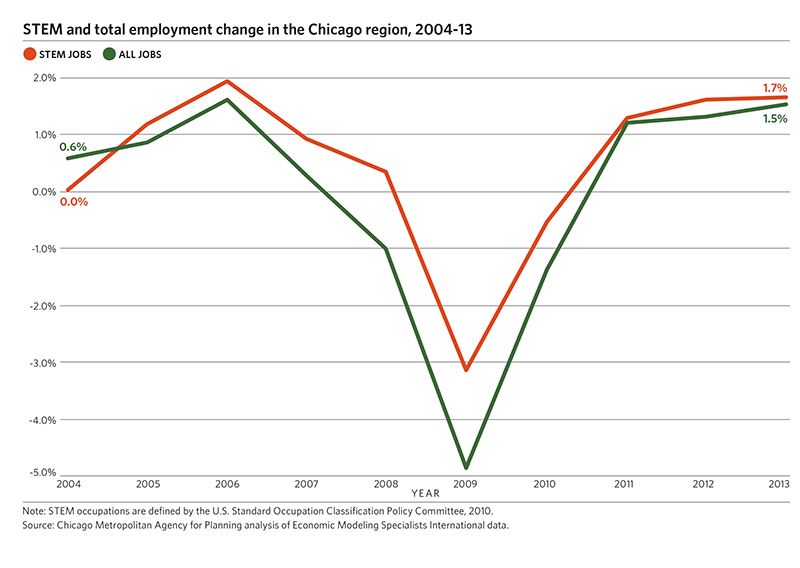STEM jobs are growing faster than the metropolitan Chicago's rate for all jobs, indicating a strong demand for highly skilled workers in the region, and these fields have also been more resilient than others in bouncing back from the recent recession. STEM employment is one of four new workforce measures available on CMAP's regional economic indicators microsite, a new resource for the economic development professionals, planners, and others who seek to understand the complex factors that shape our region's competitiveness in the global economy. On July 7, 2014, the agency launched the microsite with data and analysis on broad economic trends. The rollout continues this week with the release of workforce indicators – educational attainment, workforce participation, the skills gap, and STEM occupations. These provide a long-term snapshot of workforce trends in the region and, where data are available, compare metropolitan Chicago to peer regions such as Los Angeles, Boston, New York, and Washington, D.C.
A skilled workforce is critical for regional economic growth. Many jobs that once required only a high school degree now require additional specialized training or a postsecondary education. Ensuring that Chicago's workforce has access to advanced educational opportunities will prepare the region to compete in the global economy. Data for the region show that approximately 43 percent of Chicago region residents hold an associate degree or higher, and over 80 percent of residents age 20-64 are either working or looking for work.
An increasing proportion of the region's jobs are now concentrated in Science, Technology, Engineering, and Mathematics (STEM) fields. Coming out of the most recent recession, STEM occupations now employ roughly 467,000 individuals.
Despite increasing levels of educational attainment in the region, an analysis of select manufacturing cluster occupations shows significant gaps between the number of mid-skill job openings available and the number of individuals completing academic programs for those professions.
CMAP will continue its rollout by releasing indicators and analysis for the region's industry clusters on July 21 and innovation on July 28. Throughout the year, CMAP will post Policy Updates using these and related indicators to provide more in-depth analysis on various phenomena affecting the region's economic performance. The microsite's indicators will be updated annually as data becomes available.
